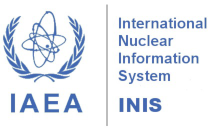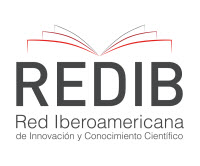Verification of absorbed dose in blood component cases using radiochromic film EBT3
DOI:
https://doi.org/10.15392/2319-0612.2025.2830Keywords:
radiochromic films, blood components, irradiationAbstract
Dosimetry of blood components is an essential practice to ensure the safety and efficacy of irradiation in blood products, serving as a fundamental measure to quantify and map the absorbed radiation doses. This study addresses dosimetric procedures using EBT3 radiochromic films according to ISO/ASTM 51939:2017 to ensure compliance with established dose standards. The methodology includes obtaining calibration curves for different absorbed dose values, mapping storage containers, and determining the optimal dose for irradiations using pre-calibrated radiochromic films with a margin of uncertainty of ±10%, based on the standards of the Gamma Irradiation Laboratory (LIG/CDTN). The irradiations were carried out in a Category II Multipurpose Panoramic Irradiator using a Cobalt-60 source. The films were positioned inside and outside the cases used for storing blood and components. The results demonstrate compliance with ISO/ASTM standards and ANVISA regulations, validating the efficacy of the quality assurance program, with a uniform distribution of absorbed doses in the analyzed containers. Data analysis shows that the absorbed dose variation is within established limits, ensuring that the components receive a minimum dose of 15 Gy and do not exceed the maximum dose of 50 Gy. Furthermore, the results indicate that the average absorbed dose was slightly below the fixed value of 25 Gy recommended by ANVISA, possibly due to the shielding effect of present materials. This study provides a solid basis for the continuous improvement of blood and blood component irradiation processes, ensuring that patients receive safe and effective treatments.
Downloads
References
[1] VANHAVERE, Filip et al. An overview on extremity dosimetry in medical applications. Radiation Protection Dosimetry, v. 129, n. 1-3, p. 350-355, 2008. DOI: https://doi.org/10.1093/rpd/ncn149
[2] ISO/ASTM 51939:2017. International Organization for Standardization - Standard Practice for Blood Irradiation Dosimetry. 2017.
[3] CALHEIRO, D. S.; MEIRA-BELO, L. C.; ALONSO, T. C. Mapping absorbed dose distribution in containers of blood and blood components using radiochromic dosimeters irradiated in an industrial irradiator. Radiation Physics and Chemistry, p. 111797, 2024. DOI: https://doi.org/10.1016/j.radphyschem.2024.111797
[4] MOROFF, Gary; LUBAN, N. L. C. The irradiation of blood and blood components to prevent graft- versus-host disease: technical issues and guidelines. Transfusion Medicine Reviews, v. 11, n. 1, p. 15- 26, 1997. DOI: https://doi.org/10.1016/S0887-7963(97)80006-5
[5] Brasil. (2022). Agência Nacional de Vigilância Sanitária (ANVISA). Manual para o Sistema Nacional de Hemovigilância no Brasil. Revisão do Marco Conceitual e Operacional da Hemovigilância: guia para a hemovigilância no Brasil. Brasília.
[6] BORCA, Valeria Casanova et al. Dosimetric characterization and use of GAFCHROMIC EBT3 film for IMRT dose verification. Journal of applied clinical medical physics, v. 14, n. 2, p. 158-171, 2013. DOI: https://doi.org/10.1120/jacmp.v14i2.4111
Downloads
Published
Issue
Section
Categories
License
Copyright (c) 2025 Isabella Lellis Ferreira, Maria Rita Pascoal de Souza Barros, Lorena Soares Fonseca, Amir Zacarias Mesquita, Thêssa Cristina Alonso, Priscila do Carmo Santana, Paulo Márcio Campos de Oliveira, Daniel Silva Calheiro

This work is licensed under a Creative Commons Attribution 4.0 International License.
Licensing: The BJRS articles are licensed under a Creative Commons Attribution 4.0 International License, which permits use, sharing, adaptation, distribution and reproduction in any medium or format, as long as you give appropriate credit to the original author(s) and the source, provide a link to the Creative Commons license, and indicate if changes were made. The images or other third party material in this article are included in the article’s Creative Commons license, unless indicated otherwise in a credit line to the material. If material is not included in the article’s Creative Commons license and your intended use is not permitted by statutory regulation or exceeds the permitted use, you will need to obtain permission directly from the copyright holder. To view a copy of this license, visit http://creativecommons.org/licenses/by/4.0/






















